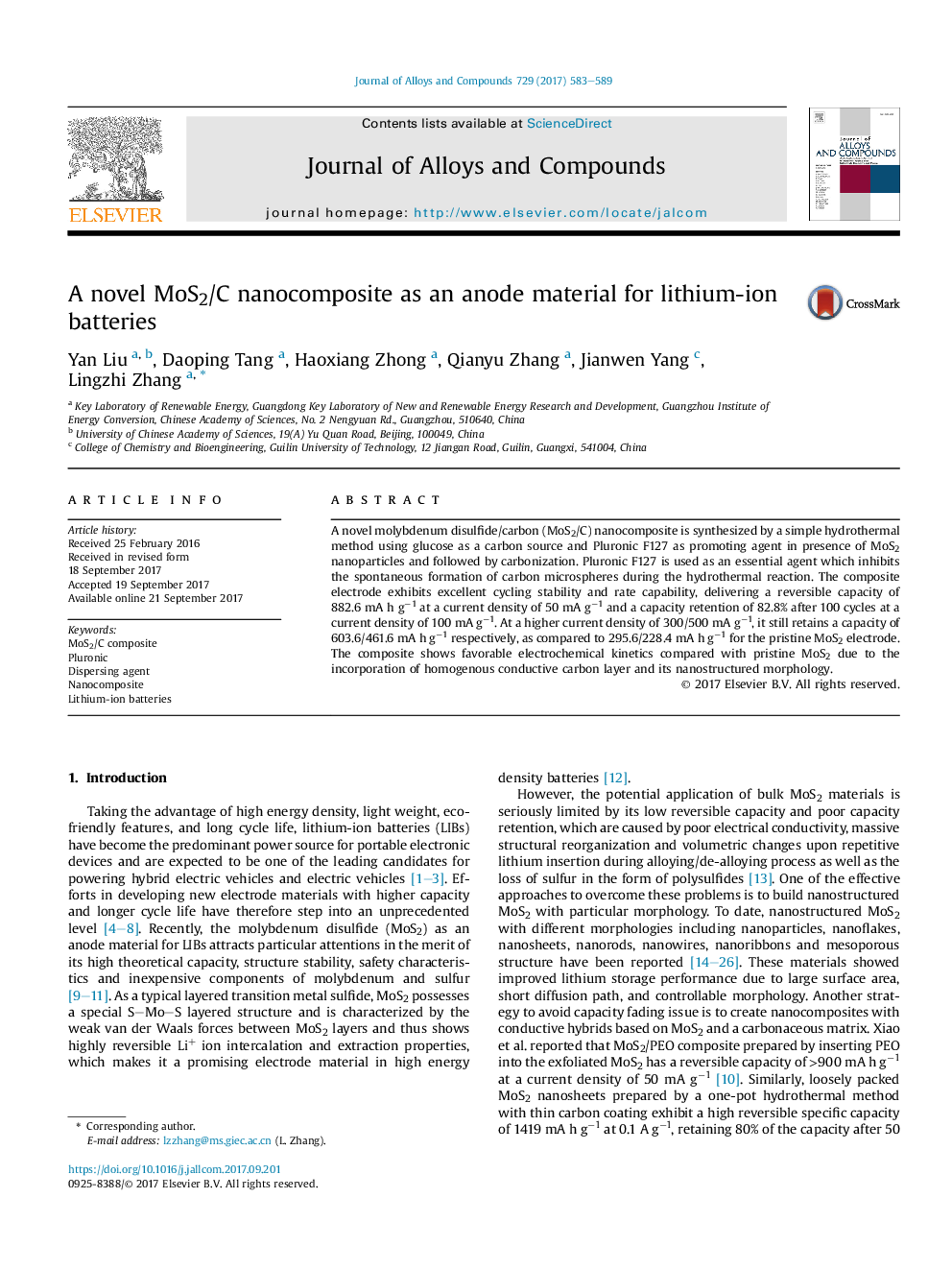| Article ID | Journal | Published Year | Pages | File Type |
|---|---|---|---|---|
| 5458281 | Journal of Alloys and Compounds | 2017 | 7 Pages |
Abstract
A novel molybdenum disulfide/carbon (MoS2/C) nanocomposite is synthesized by a simple hydrothermal method using glucose as a carbon source and Pluronic F127 as promoting agent in presence of MoS2 nanoparticles and followed by carbonization. Pluronic F127 is used as an essential agent which inhibits the spontaneous formation of carbon microspheres during the hydrothermal reaction. The composite electrode exhibits excellent cycling stability and rate capability, delivering a reversible capacity of 882.6 mA h gâ1 at a current density of 50 mA gâ1 and a capacity retention of 82.8% after 100 cycles at a current density of 100 mA gâ1. At a higher current density of 300/500 mA gâ1, it still retains a capacity of 603.6/461.6 mA h gâ1 respectively, as compared to 295.6/228.4 mA h gâ1 for the pristine MoS2 electrode. The composite shows favorable electrochemical kinetics compared with pristine MoS2 due to the incorporation of homogenous conductive carbon layer and its nanostructured morphology.
Related Topics
Physical Sciences and Engineering
Materials Science
Metals and Alloys
Authors
Yan Liu, Daoping Tang, Haoxiang Zhong, Qianyu Zhang, Jianwen Yang, Lingzhi Zhang,
